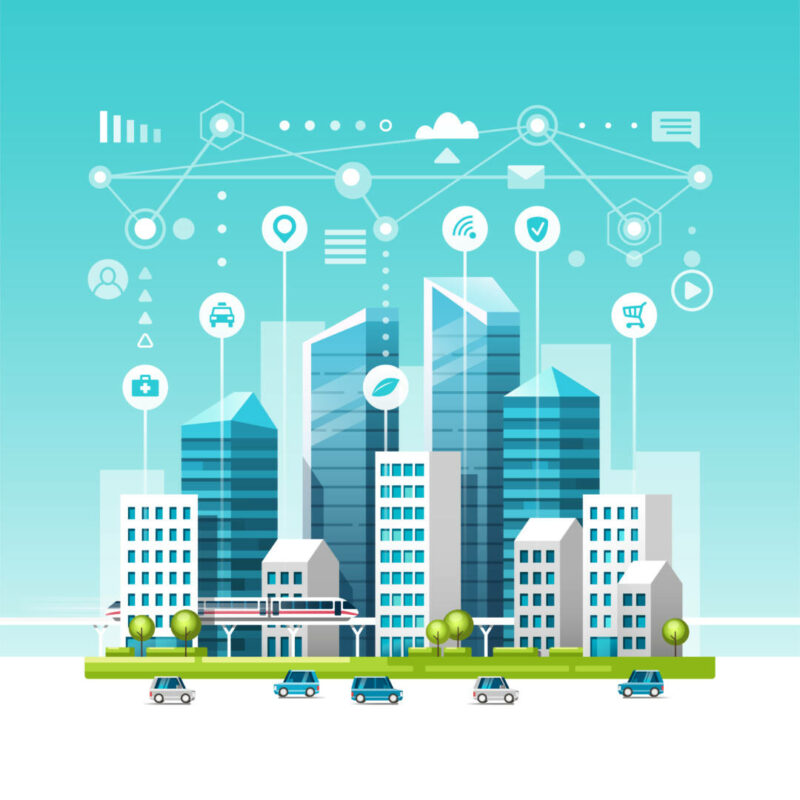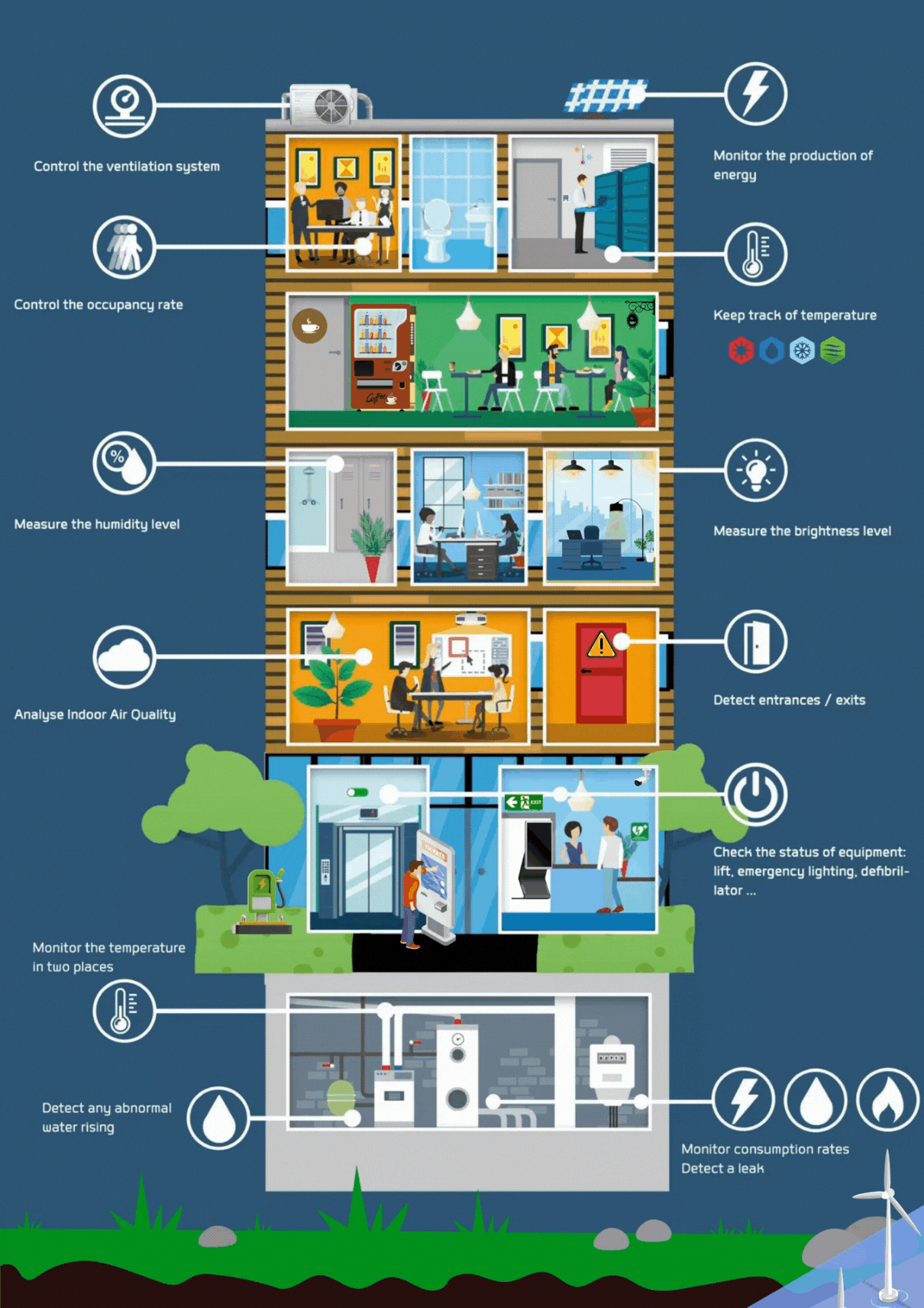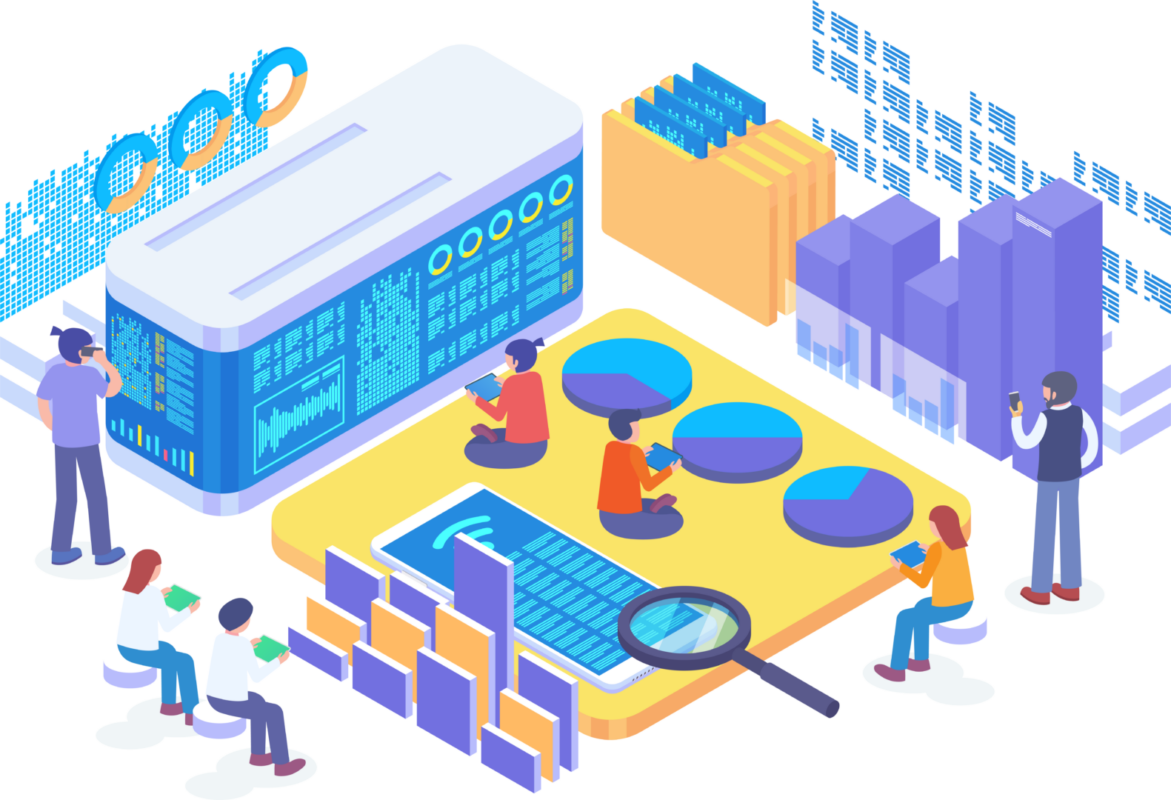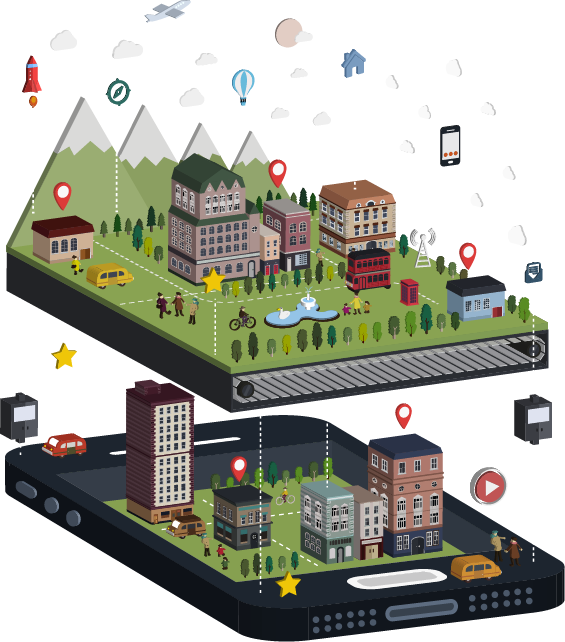Smart Building
Smart Building
Why Smart Building?
1. Integration Capabilities: A smart building integrates diverse building systems and technologies, includes
- Building Automation Systems (BAS) for controlling HVAC, lighting, and energy management.
- Security and access control systems for monitoring and managing building security.
- IoT sensors for collecting data on occupancy, temperature, humidity, air quality, energy usage, etc.
- Renewable energy systems such as solar panels and wind turbines.
- Building management software for maintenance and asset management.


- Centralized Monitoring and Control:
- Data Analytics and Insights
- Energy Management and Optimization
- Occupant Comfort and Experience:
- Rules Based and Workflow Orchestration:
- Remote Monitoring and Management
- Scalability and Flexibility
- Security and Compliance:
- APIs and Third-Party Integration





1. Integration Capabilities: A smart building platform serves as a central hub that integrates diverse building systems and technologies, including:
- Building Automation Systems (BAS) for controlling HVAC, lighting, and energy management.
- Security and access control systems for monitoring and managing building security.
- IoT sensors for collecting data on occupancy, temperature, humidity, air quality, energy usage, etc.
- Renewable energy systems such as solar panels and wind turbines.
- Building management software for maintenance and asset management.


2. Centralized Monitoring and Control: The platform provides a unified interface for monitoring and controlling various building systems and devices in real-time.
3. Data Analytics and Insights: Advanced analytics tools analyze data collected from sensors and building systems to identify trends, patterns, and anomalies.
4. Energy Management and Optimization: Smart building platforms offer energy management features to monitor energy usage, identify energy-saving opportunities, and optimize HVAC and lighting systems for efficiency.
5. Occupant Comfort and Experience: The platform includes features to enhance occupant comfort and experience, such as personalized climate control, lighting preferences, and room booking systems.
6. Rules Based and Workflow Orchestration: Smart building platforms automate routine tasks and workflows, such as HVAC scheduling, lighting control, and alarm management. They use rule-based logic and algorithms to optimize building operations and minimize manual intervention.
7. Remote Monitoring and Management: Cloud-based smart building platforms enable remote monitoring and management of building systems from anywhere with an internet connection. This facilitates proactive maintenance, troubleshooting, and decision-making, even for distributed or multi-site facilities.


8. Scalability and Flexibility: The platform should be scalable to accommodate the growing needs of buildings and organizations. It should also be flexible enough to integrate with existing infrastructure and support future technologies and expansions.
9. Security and Compliance: Smart building platforms prioritize security and compliance with data protection regulations. They employ encryption, authentication, and access controls to secure sensitive data and ensure the integrity of building systems.
10. APIs and Third-Party Integration: Open APIs allow integration with third-party applications and services, enabling interoperability with other smart city initiatives, enterprise systems, and IoT platforms.
1. Integration Capabilities: A smart building platform serves as a central hub that integrates diverse building systems and technologies, including:
- Building Automation Systems (BAS) for controlling HVAC, lighting, and energy management.
- Security and access control systems for monitoring and managing building security.
- IoT sensors for collecting data on occupancy, temperature, humidity, air quality, energy usage, etc.
- Renewable energy systems such as solar panels and wind turbines.
- Building management software for maintenance and asset management.


2. Centralized Monitoring and Control: The platform provides a unified interface for monitoring and controlling various building systems and devices in real-time.
3. Data Analytics and Insights: Advanced analytics tools analyze data collected from sensors and building systems to identify trends, patterns, and anomalies.
4. Energy Management and Optimization: Smart building platforms offer energy management features to monitor energy usage, identify energy-saving opportunities, and optimize HVAC and lighting systems for efficiency.
5. Occupant Comfort and Experience: The platform includes features to enhance occupant comfort and experience, such as personalized climate control, lighting preferences, and room booking systems.
6. Rules Based and Workflow Orchestration: Smart building platforms automate routine tasks and workflows, such as HVAC scheduling, lighting control, and alarm management. They use rule-based logic and algorithms to optimize building operations and minimize manual intervention.
7. Remote Monitoring and Management: Cloud-based smart building platforms enable remote monitoring and management of building systems from anywhere with an internet connection. This facilitates proactive maintenance, troubleshooting, and decision-making, even for distributed or multi-site facilities.


8. Scalability and Flexibility: The platform should be scalable to accommodate the growing needs of buildings and organizations. It should also be flexible enough to integrate with existing infrastructure and support future technologies and expansions.
9. Security and Compliance: Smart building platforms prioritize security and compliance with data protection regulations. They employ encryption, authentication, and access controls to secure sensitive data and ensure the integrity of building systems.
10. APIs and Third-Party Integration: Open APIs allow integration with third-party applications and services, enabling interoperability with other smart city initiatives, enterprise systems, and IoT platforms.
